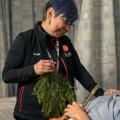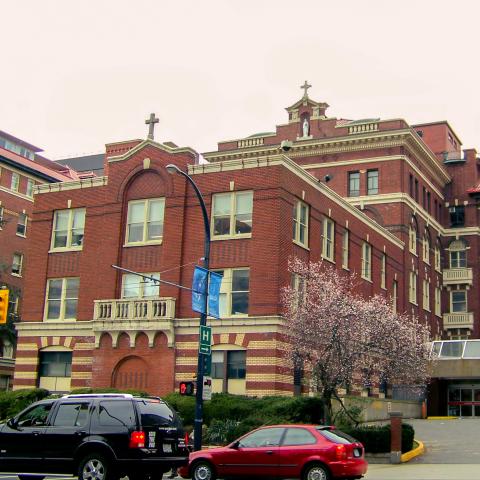Bronchoscopy
An overview of a bronchoscopy, why you would get one and what to expect during the procedure.
Overview
During a bronchoscopy, the doctor puts a thin, flexible tube called a bronchoscope through your mouth or nose, down your throat, and into your lungs.
There is a tiny camera and light at the end of the bronchoscope. This allows the doctor to see inside your lungs and air passages and take photos or videos. Small tools can also be attached to the bronchoscope to take tiny bits of tissue or fluid to the laboratory for testing.
In some cases (e.g. if you have a large item stuck in your airway or if there is significant bleeding), a rigid bronchoscope may need to be used.
Preparing for the test
To get the most out of your appointment and to have a smooth experience, here are some tips for planning your visit.
- If you do not speak English and need an interpreter (at no cost to you), please let us know in advance.
- If you need a sign language interpreter (at no cost to you), please let us know in advance.
- Do not eat or drink anything after midnight the night before your procedure. This includes water, coffee, gum, candies, and antacids.
- Make sure your doctor knows all medications you are taking. This includes over the counter supplements and herbal remedies
- If you are taking medication to thin your blood, please speak to your doctor before the procedure.
- Please do not wear scented products. All Providence Health Care hospitals and long-term care homes are scent-free environments.
On the day of the test
One hour before your test you will be admitted to the Medical Short Stay Unit (MSSU).
- A nurse will take your health history and check your blood pressure and temperature.
- The nurse will start an intravenous (also known as an IV).
- The respiratory therapist will give you a numbing medication to gargle.
During the test
The doctor will explain the test to you and answer any questions you may have. Afterwards, they will give you medication through the IV to help you relax. You will not experience any pain.
During the procedure, the doctor may give you more medicine to keep your throat numb. Sometimes, the medication drips down your throat and you may cough a bit before it takes effect.
After the test
After the procedure, you will stay in the MSSU for two hours before you go home. The nurse will check your blood pressure and will ensure you are breathing easily. Because your throat will be numb, you must wait before eating or drinking. The nurse will tell you when you can eat and drink.
It is normal to cough up small amounts of blood-tinged sputum and feel some discomfort on the back of your throat. This can last for two to three days after your procedure. A mild fever is also common within the first 12 hours after a bronchoscopy.
If the fever lasts longer than 24 hours, please contact the doctor who performed your procedure.
If you experience any sudden, severe shortness of breath, or cough up more than a tablespoon of blood, go to your nearest emergency department.
Support for Indigenous Peoples
The Indigenous Wellness Liaison Team is here to support your health journey. Team members offer cultural support and healthcare advocacy. Learn more below or call them at 604-682-2344,62937 or email IWL@providencehealth.bc.ca.


